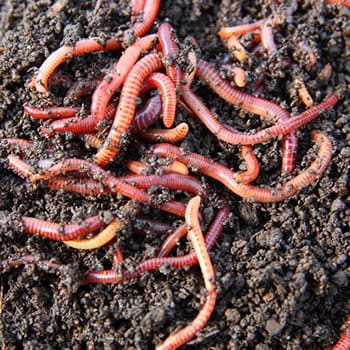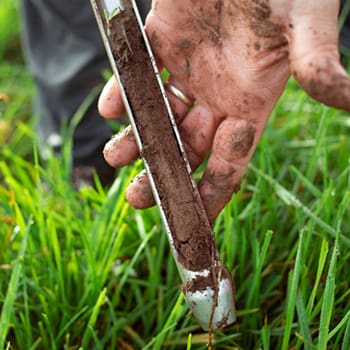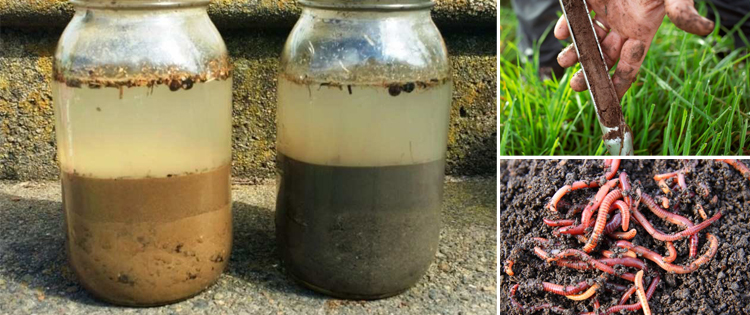Approximately 95% of our food is grown in soil; therefore, for nutrient-rich food production, healthy soil is essential in your garden. Soils supply the required oxygen, water, nutrients, and root support that plants need to flourish. The growing season is on the way, and if you want a successful harvest, getting your soil in top-notch condition is the first step. If you want to know more about preparing your soil for the spring, keep reading.
Healthy Soil Basics
Healthy soil is rich in organic matter, minerals and nutrients. It has the ability to absorb and hold water, this limits evaporation and builds resilience to extreme weather conditions. Healthy soil produces its own microbes which eliminate the need for synthetic fertilizers. There are five main factors that impact soils health:
- Soil chemistry
- Soil structure
- Organic matter content
- Soil biology
- Water infiltration, movement, and retention
Unhealthy soil will have problems in these areas, and there will be a good combination of each factor with healthy soil.
How to Improve the Soil in Your Garden
For anything planted in your garden to flourish, it needs good soil. Soil is a living organism, and it requires the same things we humans need to survive, air, water, shelter, and food. Here are some tips to improve the quality of your soil:
- Strictly Organic: Add organic material to the top two inches of soil. You can combine this with concentrated manures, lime, potassium, and mineral phosphorus fertilizers. To get the best
 results, for every 100 square feet of your garden, use 20 to 30 pounds of manure. Add them during the fall, this will give the materials time to break down so plants can use them during the winter.
results, for every 100 square feet of your garden, use 20 to 30 pounds of manure. Add them during the fall, this will give the materials time to break down so plants can use them during the winter. - Put the Worms to Work: Tilling causes poor soil structure which prevents roots from moving freely to find the moisture and the nutrients they need to thrive. Instead of using harsh equipment to till your garden, let the worms do it. Not only will it save you time, but it will also protect your soil. Sheet mulching will attract worms, and as they transport their food, they’ll burrow through the soil. On their journey, the worms will leave manure castings which will help improve the soil structure.
- Add Additional Nitrogen: Check whether your soil is nitrogen deficient by sending it to a lab, or using a home testing kit. If your soil needs additional nitrogen, you can add composted manure, fish emulsion, or add legumes or beans to your beds. As these plants grow, they’ll add nitrogen to the soil.
- Crop Rotation: Growing the same crops on your land every year will attract disease and insects. For the spring plants, rotate your crops in the winter, this will improve soil structure so that you’re not dependent on pesticides.
How to Take a Soil Test
Learning about your soil will prevent disappointment when you don’t get the results you were hoping for from planting. Before putting anything into the ground, test the soil to ensure it’s suitable. There are several tests you can use:
The Squeeze Test: Soils are either loamy, sandy, or clay; a squeeze test will help you determine the soil type. Scoop up some soil, squeeze it, and check for one of these three results:
- Loam Soil: It will keep its shape and crumble when poked.
- Sandy Soil: It does not hold its shape and will fall apart once you loosen your grip.
- Clay Soil: It will keep its shape, and won’t move when poked.
Test For Percolation: This test will tell you whether your soil has drainage problems.
- Dig a one-foot deep and six-inch wide hole.
- Pour water into the hole and leave it to drain.
- Once all the water has drained, fill the hole again.
- Take note of the time it takes for the water to drain.
- Your soil has poor drainage if the water does not drain within four hours.
Test With Worms: Worms will give you insight into the health of your soil. Earthworms in particular are an indication that soil has the beneficial microbes it needs. Follow these steps to do the worm test:
- The temperature of the soil should be at least 55 degrees and slightly moist.
- Dig a hole one foot deep and one foot wide and lay the soil out on a piece of cardboard.
- As you put the soil back into the hole, count the earthworms. Anything more than ten means your soil is in good health.
Test For Soil pH: pH levels run from zero to 14. Very acidic soil has a pH level of zero, and very alkaline soil has a pH level of 14. Most plants thrive in neutral soil that has a pH level of between 6 and 7. Plant growth is stunted in soils with a pH level lower than five and higher than eight. You can get a pH testing kit from any home gardening store.
Why Cover Crops Are Important For the Soil
Cover crops are non-cash crops grown with the intention of improving or protecting soil in between normal crop production. Cover crops provide several benefits to soil including the following:
Weed Reduction: Cover crops deprive weeds of the light and nutrients they need to grow. This exhausts the seed bank and kills them.
Improve Soil Structure: Cover crops encourage water uptake and break up compaction. A good combination of cover crop species will improve the structure of the soil.
Increased Organic Matter: When the soil contains the right amount of organic matter, it improves the mineral composition and structure. It helps the soil retain nitrogen and helps with aeration.
Prevents Nitrogen Loss: When soil is left bare, it is exposed to leaching and runoff which causes nitrogen loss. Cover crops will collect nitrogen and other nutrients from the air and soil which makes them available to the crops.
Final Thought
To give your soil a head start, get to work on it now, to ensure it’s ready for the spring. Make it your main goal to get your soil in the best possible shape, not only for food production. But because it helps to reduce the effects of global warming by absorbing carbon dioxide.
You may also like:
Boost Your Soil Quality With This Compost
What Happens When You Pour Sugar Into An Onion? (Video)








